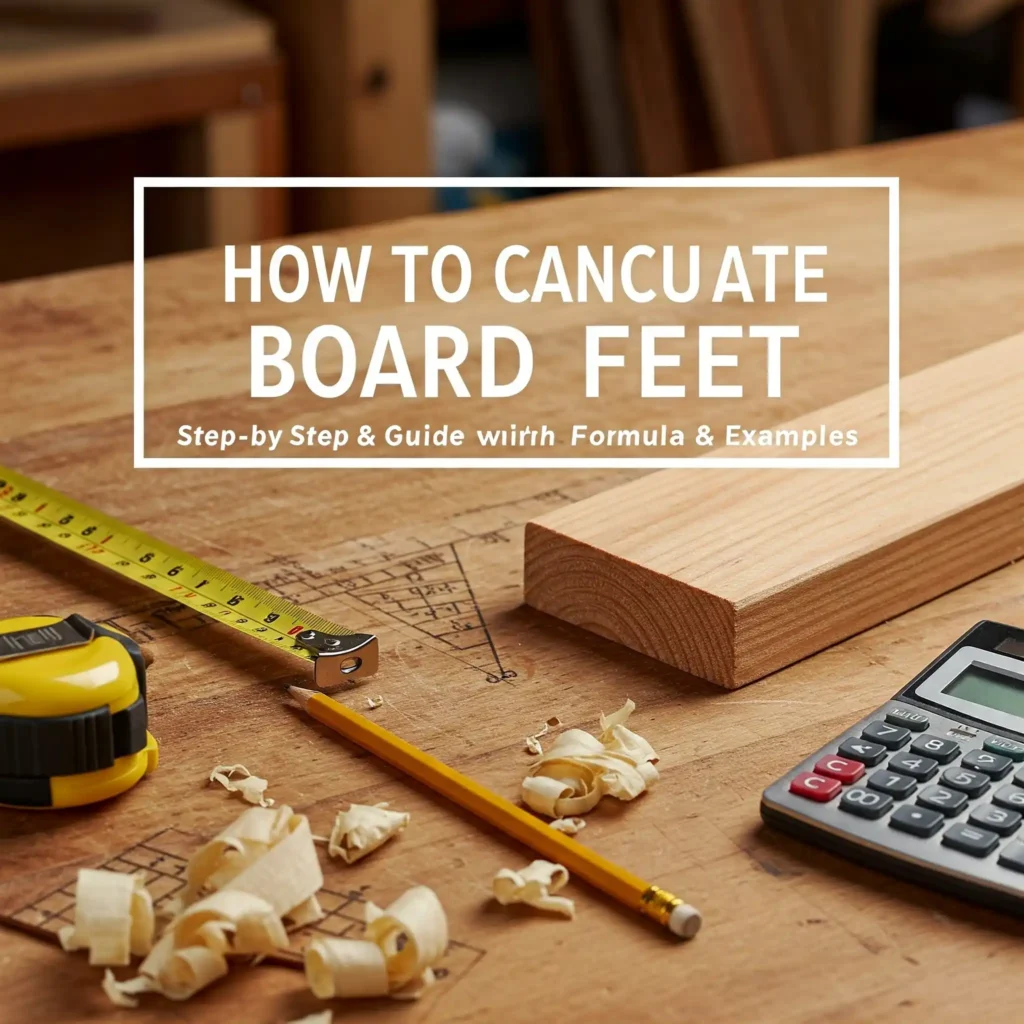Board Foot Calculator
Professional Woodworking Measurement Tool
Measure Dimensions
Measure in inches and feet (or metric units)
Calculation Formula
Where:
T = Thickness (in)
W = Width (in)
L = Length (ft)
Calculation Results
Total Board Feet: 0.00
Total Cost: $0.00
Calculation History
How to Calculate Board Feet: Step-by-Step Guide for Woodworkers
If you’ve ever shopped for lumber or planned a woodworking project, you’ve likely heard the term “board feet.” But what exactly does it mean, and how do you calculate it? Understanding board feet is essential for budgeting, avoiding material waste, and ensuring project success.

In this guide, you’ll learn:
- The board foot formula (with examples)
- How to account for nominal vs. actual lumber dimensions
- Pro tips for calculating log volume
- Common mistakes and how to avoid them
Let’s dive in!
What is a Board Foot?
A board foot is the standard unit of measurement for lumber in North America. It represents a piece of wood that is 1 inch thick, 12 inches wide, and 12 inches long (144 cubic inches). Whether you’re building a bookshelf or a deck, calculating board feet ensures you purchase the right amount of lumber.
Key Term:
- Nominal vs. Actual Dimensions: Lumber is labeled by its nominal size (e.g., 2×4), but its actual dimensions are smaller due to milling. For example, a 2×4 is actually 1.5″ x 3.5″. (Source: National Hardwood Lumber Association)
The Board Foot Formula
The basic formula for calculating board feet is:
[ \text{Board Feet} = \frac{\text{Thickness (in)} \times \text{Width (in)} \times \text{Length (ft)}}{12} ]
Example:
For a 1.5″ (thick) x 5.5″ (wide) x 8′ (long) board:
[ \frac{1.5 \times 5.5 \times 8}{12} = 5.5 \text{ board feet} ]
Pro Tip: Use our free Board Foot Calculator for instant results.
Step-by-Step Calculation Guide
Follow these steps to calculate board feet manually:
- Measure Actual Dimensions
Use a tape measure to find the thickness (in inches), width (in inches), and length (in feet). - Apply the Formula
Multiply thickness × width × length, then divide by 12. - Adjust for Quantity
Multiply the result by the number of boards.
Real-World Example:
You need ten 1″x6″x10′ boards for a shelving project.
- Actual dimensions: 0.75″ x 5.5″ x 10′
- Calculation per board:
[ \frac{0.75 \times 5.5 \times 10}{12} = 3.44 \text{ board feet} ] - Total for 10 boards:
[ 3.44 \times 10 = 34.4 \text{ board feet} ]
Calculating Log Volume: Doyle vs. International Rules
When working with raw logs, loggers use specific rules to estimate board feet. Here’s a comparison:
| Rule | Formula | Best For |
|---|---|---|
| Doyle | ((\frac{D – 4}{4})^2 \times L) | Small-diameter hardwood |
| International ¼-Inch | ((0.199 \times D^2) – (0.642 \times D)) | Large-diameter softwood |
Where (D) = diameter (in inches), (L) = length (in feet)
Example (Doyle Rule):
A 16″-diameter, 12′-long log:
[ (\frac{16 – 4}{4})^2 \times 12 = 108 \text{ board feet} ]
Source: Penn State Extension
Common Mistakes to Avoid
- Ignoring Actual Dimensions: Always use milled measurements, not nominal sizes.
- Mixing Units: Keep thickness/width in inches and length in feet.
- Forgetting Waste: Add 10-20% extra board feet for cutting errors.
Pro Tip: Bookmark the U.S. Forest Service Lumber Standards for official grading rules.
Advanced Tips for Woodworkers
- Compare Prices: Check local mills vs. big-box stores using the Random Lengths Price Index.
- Metric Conversions: For imported lumber, convert centimeters to inches (1 cm = 0.3937 in).
- Track Projects: Save calculations using our Board Foot Calculator.
FAQs
- How many board feet are in a 2x4x8?
Actual dimensions (1.5″x3.5″x8′) = (\frac{1.5 \times 3.5 \times 8}{12} = 3.5) board feet. - Can I use board feet for plywood?
No—plywood is sold by the sheet (e.g., 4′x8′) or thickness. - What’s the cost of 100 board feet of oak?
Roughly $680 (at $6.80/board foot). Prices vary—check Hardwood Industries.
Final Thoughts
Mastering board foot calculations saves time, money, and frustration. Whether you’re a DIY enthusiast or a professional woodworker, this skill ensures you buy the right amount of lumber for any project. For quick results, use our free Board Foot Calculator—no math required!
